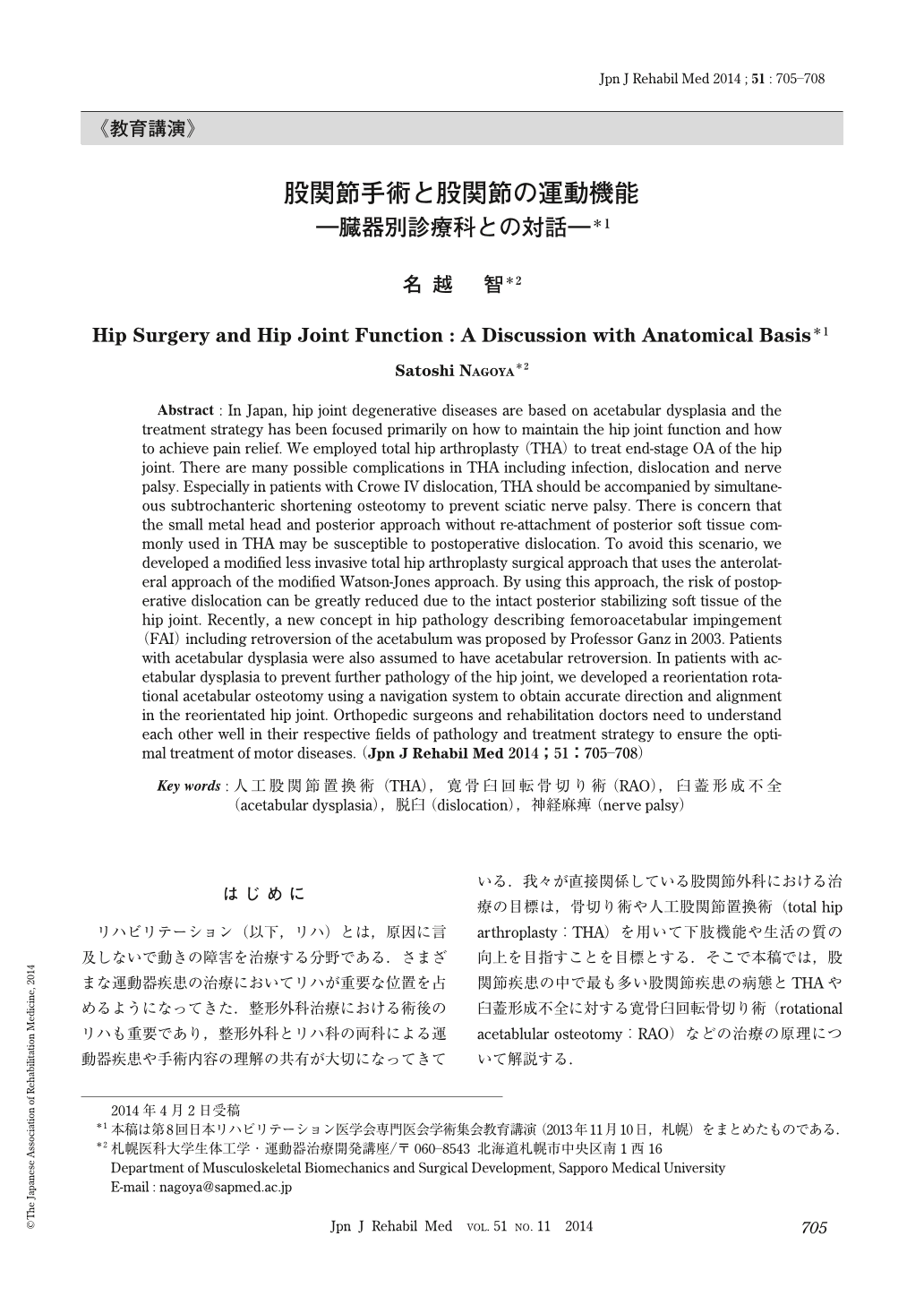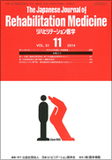Japanese
English
- 販売していません
- Abstract 文献概要
- 1ページ目 Look Inside
- 参考文献 Reference
はじめに
リハビリテーション(以下,リハ)とは,原因に言及しないで動きの障害を治療する分野である.さまざまな運動器疾患の治療においてリハが重要な位置を占めるようになってきた.整形外科治療における術後のリハも重要であり,整形外科とリハ科の両科による運動器疾患や手術内容の理解の共有が大切になってきている.我々が直接関係している股関節外科における治療の目標は,骨切り術や人工股関節置換術(total hip arthroplasty:THA)を用いて下肢機能や生活の質の向上を目指すことを目標とする.そこで本稿では,股関節疾患の中で最も多い股関節疾患の病態とTHAや臼蓋形成不全に対する寛骨臼回転骨切り術(rotational acetablular osteotomy:RAO)などの治療の原理について解説する.
Abstract : In Japan, hip joint degenerative diseases are based on acetabular dysplasia and the treatment strategy has been focused primarily on how to maintain the hip joint function and how to achieve pain relief. We employed total hip arthroplasty (THA) to treat end-stage OA of the hip joint. There are many possible complications in THA including infection, dislocation and nerve palsy. Especially in patients with Crowe IV dislocation, THA should be accompanied by simultaneous subtrochanteric shortening osteotomy to prevent sciatic nerve palsy. There is concern that the small metal head and posterior approach without re-attachment of posterior soft tissue commonly used in THA may be susceptible to postoperative dislocation. To avoid this scenario, we developed a modified less invasive total hip arthroplasty surgical approach that uses the anterolateral approach of the modified Watson-Jones approach. By using this approach, the risk of postoperative dislocation can be greatly reduced due to the intact posterior stabilizing soft tissue of the hip joint. Recently, a new concept in hip pathology describing femoroacetabular impingement (FAI) including retroversion of the acetabulum was proposed by Professor Ganz in 2003. Patients with acetabular dysplasia were also assumed to have acetabular retroversion. In patients with acetabular dysplasia to prevent further pathology of the hip joint, we developed a reorientation rotational acetabular osteotomy using a navigation system to obtain accurate direction and alignment in the reorientated hip joint. Orthopedic surgeons and rehabilitation doctors need to understand each other well in their respective fields of pathology and treatment strategy to ensure the optimal treatment of motor diseases.

Copyright © 2014, The Japanese Association of Rehabilitation Medicine. All rights reserved.


